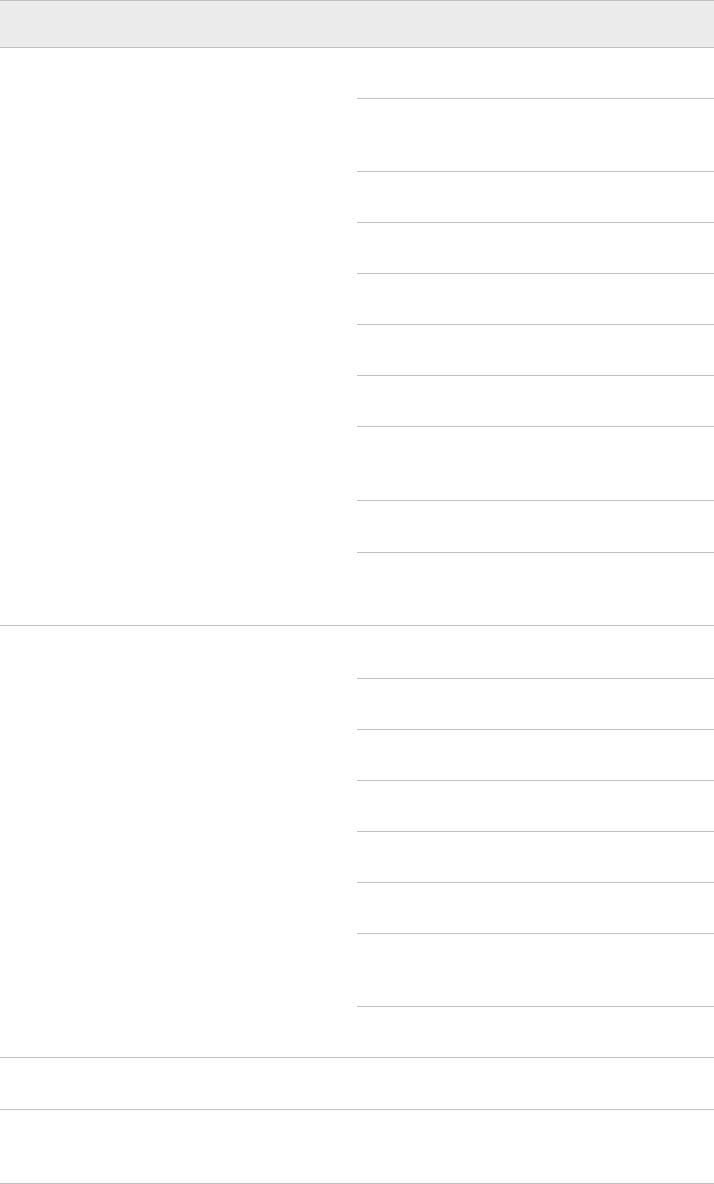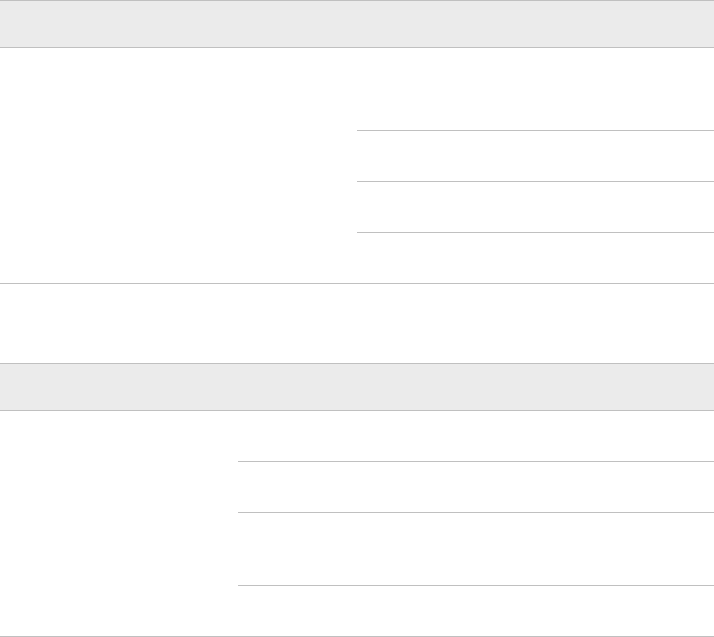
• Enter an equal sign (=) and the number of the frame that you want to go to. For
example, =1 displays the Text Body and Margin Information frame, and =2 displays
the Carriage Control Information frame.
• Select the name of the frame from the Tools menu.
• Select Next Screen or Previous Screen from the Tools menu.
You can move between fields on a frame with the TAB key.
After you finish defining or editing your form, issue the END command to save your
changes and exit the FORM window.
Note: Turning on Forms by checking the Use Forms check box in the print window
turns Universal Printing off for printing non-graphic windows.
Operating Environment Information
For more information about printing with Forms, see the documentation for your
operating environment.
Using Fonts with Universal Printers and
SAS/GRAPH Devices
Rendering Fonts
Universal printing uses the following two methods to generate and display fonts in SAS
output.
• the FreeType library
• the font-rendering capabilities of the host
Universal printing supports the following font formats:
• TrueType fonts
• Type1 fonts
Note: Universal Printing and SAS/GRAPH do not support double-byte Type1 fonts.
The output methods in the following table are recommended because they use the
FreeType library to render fonts. This means that they can render fonts in all of the
operating environments that SAS supports.
1
1
The FreeType library is used to perform two distinct operations in SAS: measuring the text and rendering the font. Depending on the
output devices specified, the FreeType library can perform one or both of these operations. to render fonts.
Using Fonts with Universal Printers and SAS/GRAPH Devices 283

Table 15.9 Recommended Devices (because they use the FreeType library to render fonts)
Output Method Device
SAS/GRAPH devices GIF, GIFANIM, HTML, WEBFRAME
TIFFB, TIFFP, TIFFG3, TIFFB300,
TIFFP300
JPEG
PCL5, PCL5C, PCL5E
PDF, PDFC, PDFA
PNG, PNGT, PNG300
PSL, PSCOLOR, PSLEPSF, PSLEPSFC
SVG, SVGT, SVGVIEW, SVGANIM, and
SVGZ
*
SASEMF, SASWMF
**
SASPRTC, SASPRTG, SASPRTM printer
interface devices
ODS printing and Universal Printing
EMF, EMFDUAL
**
GIF
PCL5, PCL5C, PCL5E
PDF, PDFA
PNG, PNGT, PNG300
PostScript
SVG, SVGT, SVGZ, SVGView, and
SVGnotip
SVGANIM
ODS RTF
PNG, SASEMF
*
, EMF
ODS HTML PNG, PNGT, PNG300, GIF, JPEG, SVG,
SVGT
*
*
If the NOFONTRENDERING option is set, the device driver uses only the FreeType library for
measuring the text. See “FONTRENDERING= System Option” in SAS System Options: Reference
**
These devices use the FreeType library only for measuring text. The final font rendering is done by an
application such as Microsoft Word, which displays the output using system installed fonts.
284 Chapter 15 • Printing with SAS

You can specify the QDEVICE procedure to see a list of supported fonts. For a more
detailed example, see Example 5: Generate a Font Report.
proc qdevice;
run;
Table 15.10 Devices That Use Host Font-Rendering Only
Output Method Device
SAS/GRAPH devices ACTIVEX, ACTXIMG, JAVA, JAVAIMG
Note: These are client devices.
BMP
EMF, WMF
ZGIF
Table 15.11 Devices That Use Either FreeType Font-Rendering or Host Font-Rendering
Output Method Device By Default, uses ...
SAS/GRAPH devices ZGIF, ZPNG Host font-rendering
HTML, WEBFRAME FreeType font-rendering
TIFFB, TIFFP, TIFFB300,
TIFFP300
FreeType font-rendering
JPEG FreeType font-rendering
Note: You can set OPTIONS FONTRENDERING= FREETYPE_POINTS or OPTIONS
FONTRENDERING=HOST_PIXELS to change the rendering method for devices that
support both the FreeType library and host rendering.
UNIX Specifics
With devices that use host rendering in a UNIX operating environment, the TrueType
fonts must be installed on the X server that is being used. This is usually specified by
the DISPLAY environment variable. For more information, see the Configuration
Guide for SAS 9.4 Foundation for UNIX Environments.
The FONTEMBEDDING and FONTRENDERING System Options
Embedding Fonts in Your Output
Font embedding (using the “FONTEMBEDDING System Option” in SAS System
Options: Reference. ) allows fonts used in the creation of output to travel with that
output, ensuring that it is displayed or printed exactly as you intended. Here are some
important points to know about font embedding:
• Fonts are included in the output files that are created by the Universal Printer and
SAS/GRAPH.
Using Fonts with Universal Printers and SAS/GRAPH Devices 285
Get SAS 9.4 Language Reference, 6th Edition now with the O’Reilly learning platform.
O’Reilly members experience books, live events, courses curated by job role, and more from O’Reilly and nearly 200 top publishers.

